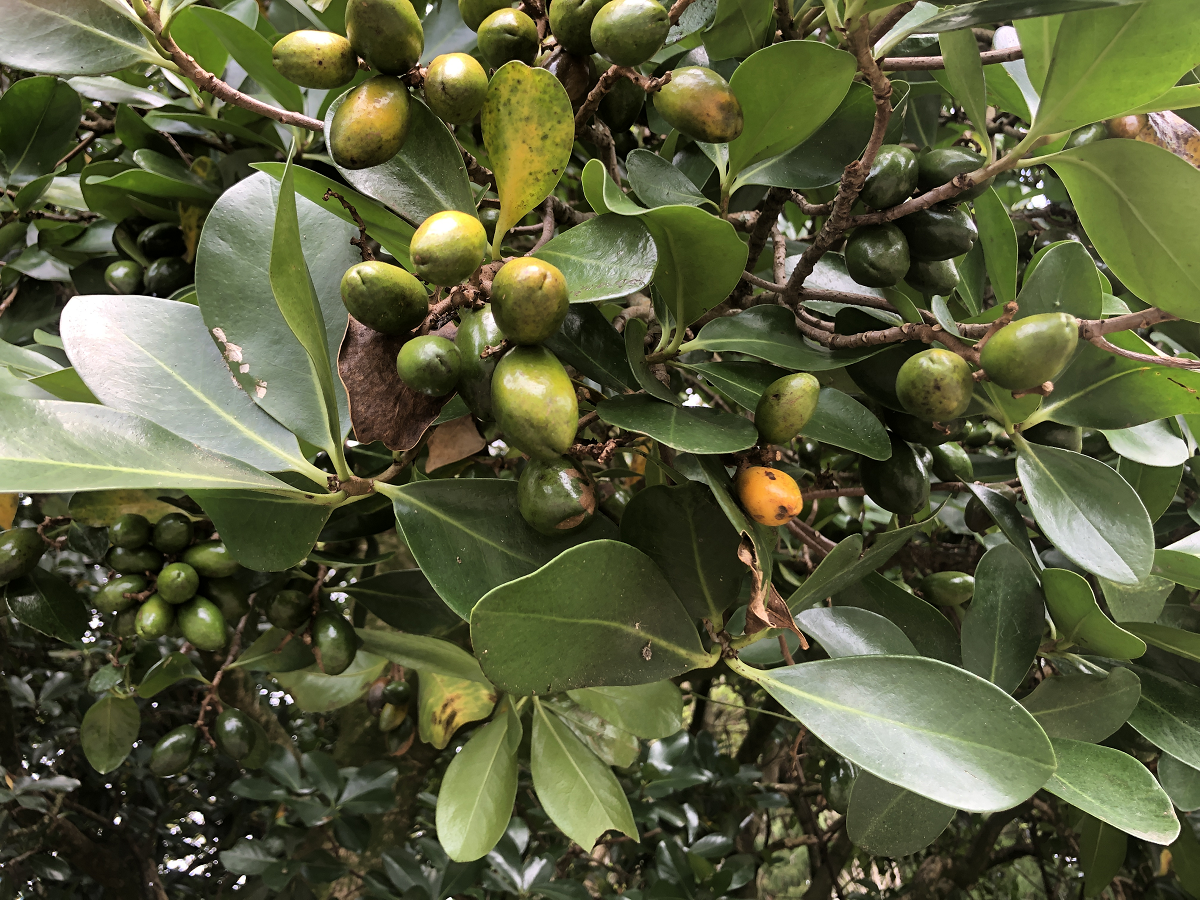Ecology
tree of the month - karaka
Have you seen our karaka trees in Cornwall Park? Karaka (Corynocarpus laevigatus), is an endemic tree in Aotearoa New Zealand, meaning it is found nowhere else in the world. Karaka is also the Te Reo Māori word for orange, which comes from the orange of the karaka fruit. In Cornwall Park karaka trees can be found all over the park, often having grown well on rocky outcrops.

Karaka is also sometimes known as New Zealand laurel, or kopi on the Chatham Islands. Karaka can be found around a large part of Aotearoa New Zealand, especially in coastal forests. This tree can grow up to 15m tall with a wide canopy, and trunks can be up to 60cm in diameter. The bark of karaka trees appears to be split into distinct segments, and the tree is very recognizable for its large, shiny, smooth, dark green leaves. Karaka trees also grow small white flowers and orange fruit. Once you know what karaka looks like it is easy to identify as it does not look very similar to any other native New Zealand trees.
Karaka trees fruit in summer and autumn, with oval-shaped fruits that go from green to yellow to orange as they ripen. The fruit of karaka trees is toxic to people and many other animals, due to it containing the toxin karakin, which is mostly found in the kernel. The flesh of the fruit can be eaten, and was historically an important food source for Māori, though it should not be attempted without proper knowledge of how to prepare this highly toxic fruit. The kernels were also eaten by Māori, again with special preparation methods that remove the toxin. The fruit are naturally eaten by birds, especially kereru, which are important seed dispersers for karaka.
Karaka is a very significant plant to Māori, having been planted all around the country for use as a food source. The natural distribution of karaka is thought to be only the northern North Island, though its distribution now is much wider as planting by Māori was done around a large area of Aotearoa. The preparation of karaka fruit for eating is an important cultural practice that is still done today. As well as being a culturally important plant and an important food source, karaka leaves were also used in rongoā Māori (Māori medicine), used for application to wounds.
Karaka is an amazing tree that you can admire anytime in Cornwall Park. However, it is important to be aware of the toxicity of the fruits, especially as they fall to the ground during summer and can be eaten by dogs. Karaka fruit is toxic to both humans and dogs, so it is very important to be aware when you are around these trees and to not to attempt to eat them if you do not know the proper preparation methods. In Cornwall Park there are karaka trees near The Grotto, Pūriri Drive, the stone walls near the main entrance, the Belvedere, Twin Oak Drive, and Campbell Crescent. When walking your dog make sure to avoid these trees during summer and autumn, and keep a close eye on anything your dog might try to eat off the ground.

